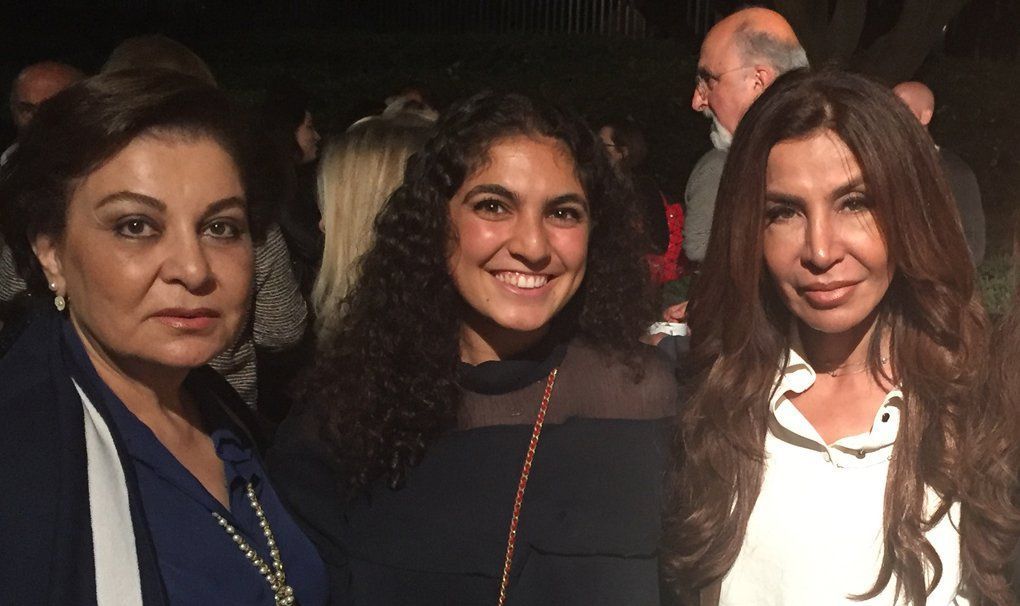Who are the art collectors and patrons of the present-day Middle East? That was the theme of a panel discussion held last week at the Los Angeles County Museum of Art (LACMA), which holds the largest collection of Middle Eastern art in North America. The panel participants included Roxane Zand, Sotheby’s Deputy Chairman for the Middle East; the Iranian collector Houman Sarshar; and curators from LACMA.
The panel was organized by Roshi Rahnama, founder of Advocartsy, together with Sotheby’s and with LACMA’s Art of the Middle East department.
“Middle Eastern Art is in the midst of a Renaissance,” Ms. Zand told the panel. “It’s strong, it’s doing well, and there is growth in it. The Middle East is considered an emerging market in art circles, although the reality is that the area is quite well known, with a long list of distinguished artists.”

In her presentation, Ms. Zand gave a brief history of patrons of the arts in the present-day Middle East, starting with the Safavid, and Qajar monarchs, and leading up to Iran’s former Empress Farah Pahlavi and to the Aga Khan. She listed prominent present-day art patrons in The Gulf emirates, including Qatar’s Sheikha Al-Mayassa bint Hamad bin Khalifa Al-Thani, sister of the Emir.
Zand then mentioned the British-Iranian collector Ali Sarikhani. “What is unique about his collection is that he houses it in his own home in the U.K.,” Ms. Zand said, describing the house as “a state-of-the-art facility.”
According to Ms. Zand, Mr. Sarikhani hired 20 artisans from Iran to create a replica of a mosque in Isfahan in the entrance to his museum. “Visiting his museum is actually an extraordinary experience,” she said, “and conveys something again which is typical of most collectors: a unique passion for what they do.”
Linda Komaroff, curator and department head of art of the Middle East at LACMA, said she noticed that the public was more attracted to contemporary Middle Eastern works than to older ones.
“From what I saw first in the British Museum and then at LACMA, this type of art excites visitors,” she said. “Perhaps it looks different, and it engages an audience, as it is unexpected. With contemporary art, as compared to historical Islamic art, the connection with our audiences is more immediate.”
Mr. Sarshar – founder of the Kimia Foundation – described collecting as “a peculiar affliction: on the psychological spectrum it lies somewhere between OCD [obsessive-compulsive disorder], hoarding, sadomasochism and narcissistic personality disorder.”
He then launched into a humorous explanation.
“OCD: because you literally become obsessed with those things you collect – their condition, their history, their provenance. Hoarding: that one is self-explanatory,” he said.
“Sadistic: because at some point, you realize you spend countless hours of your life picking up, putting down, lifting, hanging, packing, unpacking, framing, photographing, researching and cataloguing things that at times just start to look like a pile of colored, splattered paper and stretched fabric,” Mr. Sarshar added.

Dr. Sarshar paid homage to his longtime mentor, Professor Ehsan Yarshater of Columbia University (founding editor of Encylopedia Iranica). He said that thanks to the work he had done for the Encyclopedia Iranica gala, he got a chance to meet artists such as the late Bahman Mohasses and Parviz Tanavoli.
Dr. Sarshar said he owned one of Mr. Tanavoli’s “Heech” sculptures, which the artist signed for him on a visit to his home.
Asked which work of art he dreamed of owning, he listed
“Requiem Omnibus (Death of Martin Luther King)” by Bahman Mohasses, which recently sold at a Sotheby’s auction in London for $750,000 – a record for the painter.


